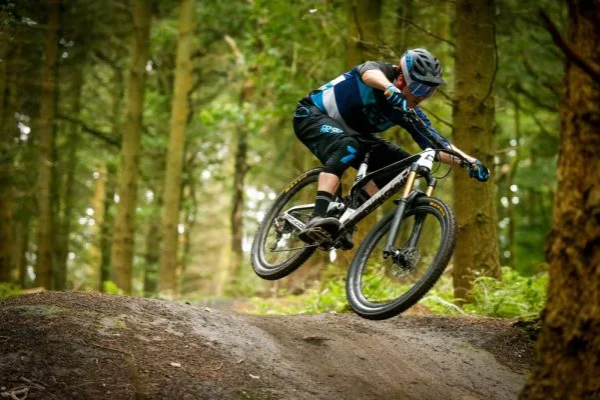Mountain biking is an exhilarating sport that combines physical challenge and technical skill. To get the most out of your mountain biking experience, understanding the right gears to use is essential. This article will cover everything you need to know about mountain bike gears, from the basics to advanced tips.
Understanding Mountain Bike Gears
What Are Gears?
Gears are mechanical components that allow you to change the resistance on your bike. By shifting gears, you can make pedaling easier or harder, which helps you handle different types of terrain.
Why Gears Matter
Gears are crucial for efficiency. They help you manage your energy, maintain a steady cadence, and tackle various terrains, whether you’re climbing steep hills or cruising down slopes.
Types of Gears
Front Gears (Chainrings)
Chainrings are attached to the crankset. Most mountain bikes have one to three chainrings. Single chainring setups (1x) are popular for simplicity and reliability.
Rear Gears (Cassettes)
Cassettes are located on the rear wheel. They consist of multiple sprockets, typically ranging from 7 to 12. More sprockets mean more gear options.
Derailleurs
Derailleurs move the chain between different gears. The front derailleur shifts the chain between chainrings, while the rear derailleur shifts it across the cassette.
Choosing the Right Gear Setup
Single Chainring (1x)
Single chainring setups are simple and lightweight. They offer a wide range of gears with fewer components, reducing the risk of mechanical issues.
Double Chainring (2x)
Double chainring setups provide more gear options. They are suitable for riders who need a balance of climbing gears and high-speed gears.
Triple Chainring (3x)
Triple chainring setups offer the widest range of gears. They are ideal for riders who tackle extremely varied terrain.
Understanding Gear Ratios
What Are Gear Ratios?
Gear ratios determine how many times the rear wheel turns for each pedal stroke. Lower ratios are easier to pedal but slower, while higher ratios are harder but faster.
How to Calculate Gear Ratios
Divide the number of teeth on the chainring by the number of teeth on the cassette sprocket. A 32-tooth chainring and a 16-tooth sprocket give a 2:1 ratio.
Gear Combinations for Different Terrains
Climbing Hills
Use lower gears for climbing. A smaller chainring and a larger cassette sprocket make pedaling easier.
Descending
Use higher gears for descending. A larger chainring and a smaller cassette sprocket allow you to pedal faster.
Flat Terrain
Use middle gears for flat terrain. This helps maintain a steady cadence and conserve energy.
Shifting Techniques
When to Shift
Shift before you need to. Anticipate changes in terrain and shift gears in advance to maintain momentum.
How to Shift
Shift smoothly. Reduce pedaling pressure slightly as you shift to prevent the chain from slipping or breaking.
Maintaining Your Gears
Regular Cleaning
Keep your gears clean. Dirt and grime can cause wear and tear. Use a brush and degreaser to clean the chain, chainrings, and cassette.
Lubrication
Lubricate your chain regularly. Use bike-specific lubricants to ensure smooth shifting and reduce friction.
Inspecting for Wear
Check for worn parts. Look for signs of wear on the chain, chainrings, and cassette. Replace parts as needed to maintain optimal performance.
Upgrading Your Gears
Why Upgrade?
Upgrading gears can improve performance. Better components can provide smoother shifting, more durability, and a wider range of gears.
What to Consider
Consider compatibility. Ensure new components are compatible with your existing setup. Consult with a bike shop if you’re unsure.
Popular Upgrades
Upgrade to a wide-range cassette. This can provide more options for climbing and descending. Also, consider upgrading to a more precise derailleur or lighter chainring.
Common Gear Problems and Solutions
Chain Slipping
- Causes: Worn chain or cassette, dirty components.
- Solutions: Replace worn parts, clean and lubricate the drivetrain.
Difficulty Shifting
- Causes: Misaligned derailleur, stretched cables.
- Solutions: Adjust the derailleur, replace cables if necessary.
Noisy Gears
- Causes: Misaligned gears, dirty components.
- Solutions: Align the gears properly, clean and lubricate the drivetrain.
Gears for Different Riding Styles
Cross-Country (XC)
Focus on lightweight gears. XC riders benefit from a single or double chainring setup for efficiency and speed.
Trail Riding
Opt for versatility. A double chainring setup provides a balance of climbing and descending gears.
Enduro
Prioritize durability. Enduro riders often use a single chainring with a wide-range cassette to handle tough terrain.
Downhill
Choose high-speed gears. Downhill riders typically use a single chainring setup with fewer but tougher gears.
Advanced Gear Tips
Gear Mapping
Understand your gear combinations. Create a gear map to know which combinations work best for different terrains.
Cadence Management
Maintain a steady cadence. Aim for 70-90 RPM (revolutions per minute) for optimal efficiency.
Power Meter Integration
Use a power meter. This helps you monitor your effort and adjust your gearing for maximum performance.
See Also: Is Mountaineering a Sport
Customizing Your Gear Setup
Personal Preferences
Tailor your gears to your riding style. Consider factors like terrain, fitness level, and personal preference.
Professional Fitting
Get a professional bike fit. A bike shop can help you find the perfect gear setup for your body and riding style.
Conclusion
Understanding and choosing the right gears for mountain biking is crucial for an enjoyable and efficient ride. Whether you’re climbing steep hills, descending rapidly, or cruising on flat terrain, the right gears make all the difference. By learning about gear types, ratios, shifting techniques, and maintenance, you can optimize your mountain biking experience and tackle any trail with confidence. Happy riding!


